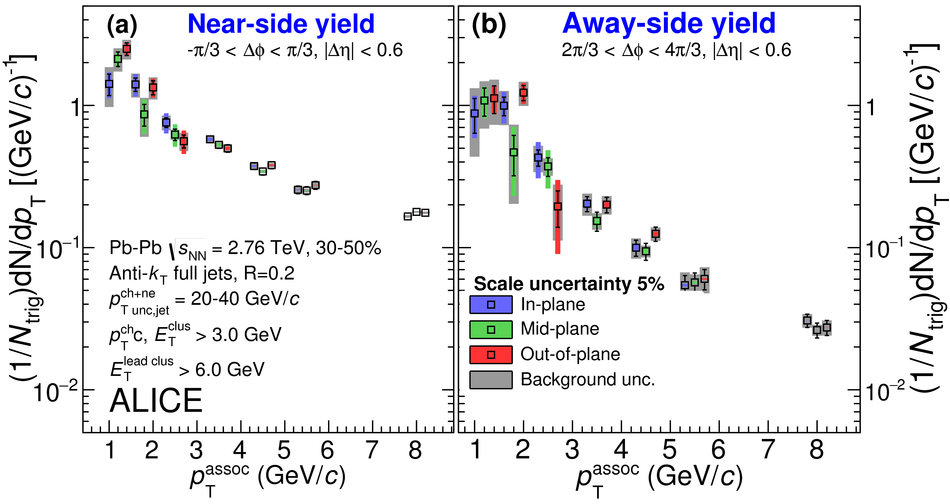The Quark Gluon Plasma (QGP) produced in ultra relativistic heavy-ion collisions at the Large Hadron Collider (LHC) can be studied by measuring the modifications of jets formed by hard scattered partons which interact with the medium. We studied these modifications via angular correlations of jets with charged hadrons for jets with momenta 20 <~ $p_{\rm{T}}^{\rm{jet}}$ <~ 40 GeV/$c$ as a function of the associated particle momentum. The reaction plane fit (RPF) method is used in this analysis to remove the flow modulated background. The analysis of angular correlations for different orientations of the jet relative to the second order event plane allows for the study of the path length dependence of medium modifications to jets. We present the dependence of azimuthal angular correlations of charged hadrons with respect to the angle of the axis of a reconstructed jet relative to the event plane in Pb-Pb collisions at $\sqrt{s_{\rm{NN}}}$ = 2.76 TeV. The dependence of particle yields associated with jets on the angle of the jet with respect to the event plane is presented. Correlations at different angles relative to the event plane are compared through ratios and differences of the yield. No dependence of the results on the angle of the jet with respect to the event plane is observed within uncertainties, which is consistent with no significant path length dependence of the medium modifications for this observable.
Phys. Rev. C 101, 064901
HEP Data
e-Print: arXiv:1910.14398 | PDF | inSPIRE
CERN-EP-2019-244







